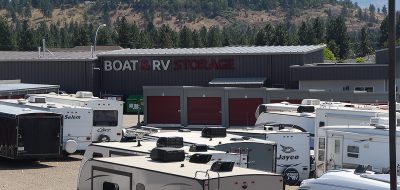 Tag axles – why do people want tag axles on today’s diesel pushers? Well, first I guess we should define what exactly is a tag axle. It is a trailing axle that normally is mounted directly behind the drive axle. It is a non-driven axle that generally is equipped with two wheels, one on each side. In today’s coaches it follows a dual-tired axle that has two wheels on each side.
Tag axles – why do people want tag axles on today’s diesel pushers? Well, first I guess we should define what exactly is a tag axle. It is a trailing axle that normally is mounted directly behind the drive axle. It is a non-driven axle that generally is equipped with two wheels, one on each side. In today’s coaches it follows a dual-tired axle that has two wheels on each side.
What benefit does a tag deliver anyway? Well, it provides an increase in carrying capacity, usually an additional 10,000 lbs. to 20,000 lbs. It also may decrease the distance from the rear most axle center to the further rear-most portion on the vehicle, often termed the drawbar. This decreased distance increases the departure angle of the rear overhang of the coach body and frame, making the rear of the coach frame less liable to contact the roadway on uneven ramps or sloped surfaces. Further more, the extra axle today is equipped with an additional set of air brake drums, or in some cases, air disc brakes.
So, is that all? Not really. There are less subtle advantages, like the length of the drive shaft. In as much as the engine is located in the rear most portion of the vehicle, the driving axle is positioned somewhat further than a single rear axle coach, as the tag is between the engine and the drive axle. This substantially reduces the acute angle of the drive shaft universal joints at the transmission output and the differential input during high chassis height maneuvers or low bottom-out events. This nearly eliminates premature “U” joint failure or shaft seal damage caused by excessive drive line angle.
Okay, I see it on your face. How can the transmission’s drive shaft power an axle ahead of the one directly in front of it? Easy really, the tag axle is made up of a “U” like axle frame allowing plenty of room for the drive shaft to pass above it. So, now the gear heads are happy anyway.
Does it drive and handle better than that of a single axle? In my opinion, no! I feel that the stories of it being far more stable are grossly over stated. If your weight balance, alignment and running gear are set properly, a single rear axle will perform equal to that of a tag equipped coach.
What about the extra cost of tire replacement? Well, you are hauling more weight given the additional size and weight of your coach, so……… Okay, think of it this way, your rear tires will last longer than that of a single rear axle coach. This is simply because less weight per tire may well be the result. As far as turning sharp corners, all tags offered today have a selectable lifting, unloadable or steering type tag actuator. This may add up to only a slightly higher per mile tire cost that may be attributed to the extra set of wheels.
So, how about the “Cool” factor? You know. that macho thing that some of us, not me of course, suffer from. I notice this rarely affects females. Most wives don’t know what a tag axle is, nor care to have one. This may in fact work in our favor, ….. Shhhhhhh!! Next week, we will take a look at the different tag axle configurations.
Okay! Let’s hear from those opposed and those in favor of the right to have a tag axle!
Tag, You’re It! – Lug_Nut – Peter Mercer





Anonymous
I have had 3 Class C’s and one new Class A. The 1995 class C was much more stable to drive than any if the others because of the tag axle. Especially if there was any wind or a trucker passing by.
Anonymous
Thank you all, really good input since I am not a gearhead. What year did they add
the assisted turning option on the tag axle? I was told at the Dallas RV show a couple of years ago that it was only a few years ago. We want to go 43′ to 45′ and buy preowned in about 3 years when my wife retires. We’ll tow a car, not sure yet, but we’ll be going to the West Coach and going over mountains so I’ll need some Cummins Diesel power. My Dad was with Cummins for 50 years so he’ll have input, but what is the minimum HP you would buy, 500HP?
Thanks
Dave Thomas
Pingback: URL
Pingback: My Homepage
Pingback: Dual Axel | Fusion Living
Lug_Nut
proyham, Well, first of all, my reference to the extra set of brakes was not to imply better braking but rather additional braking for the additional weight/size. The departure angle is generally better on many of the offerings, not necessarily all. We can’t use one brush to paint an opinion of all. Your example of a 40′ single rear axle and a 42′ tag equipped unit amplifies the loss of storage and is true. This is not as bad with a longer unit like a 45′
Thank you for your valued input on this topic.
proyham
This might be an old and unread thread, but a couple of points since I have only now come across it.
One reference above mentions better braking, but a tag actual reduces the psi of the tires on the road. Same for the traction benefits. Think about it!
Who loads their coach with that much extra junk? We spend 4 to 6 months on our 41 Contessa, and never fill it up, and mostly don’t use what we bring with us , anyway.
And seriously, the biggest advantages in handling have come about as a result of improved chassis, steering and suspension design, wouldn’t you say?
The difference between our ’01 Marquis and our ’08 Contessa is huge, yet the Magnum chassis on the Marquis was considered premium at the time. Our Contessa with a Roadmaster chassis and 8 air bags handles rough roads and cross winds, rain and even (gasp) snow, with much greater aplomb than the older rig.
One question to put out there; What IS the difference between the overhang of a unit with and without a tag? I have looked very closely, but never measured what to me looks exactly the same distance from the rear axle to the back of a comparable coach. Our Contessa 40′ and 42′ for example, in which the 42′ seems to loose basement storage, and only adds weight with an extra A/C, the TAG, and a larger genset. Everything else is the same. The spec sheets do not differentiate in capacities at all. Please explain that one.
Bottom line, our non-tag unit handles our 10k miles per year demands, over some terrible roads, including Mexico, and does not limit our load carrying nor our access to tight campgrounds or gas stations.
Needless to say, I see no tags in my future. Thanks for the forum. Good stuff.
Lug_Nut
■Charles Settembrini, No all class A’s do not have tag axles. I don’t know that there are any gas rigs built anymore with tags, only diesel pushers 42′ and over. The tag axle is a trailing non-dual tired axle that is positioned behind the main drive axle. The majority have a 10,000 lbs, capacity and are equipped with brakes. They are used on heavier coaches to help take some of the weight. A single rear axle can only be up to 20,000 lbs. to conform to the U.S. Bridge stanards. The addition of the tag gives it a total of 30,000 lbs, for the rear of the coach. I hope this helps you understand. Thank you for your input and please feel free to ask any questions that you wish.
Charles Settembrini
Do all class A motorhomes have a tag axels? What are the benefits of it for breaking purposes? Are tag axels with breakes standard or an extra when buying a motorhome?
CS
Jennifer B
We are considering our first RV. Looking at a ’98 Winnebago Diesel and a ’98 Holiday Rambler Endeavor Gas with a tag axle. We are also considering a Super C.
We have an antique car that with trailer will probably be around 8K lbs that we may want to bring with sometimes. Any suggestions or considerations?
Lug_Nut
Dave Fouts, Generally tag axle designs on front end engine units are used to increase both the carrying capacity and to increase the rear departure angle. They are not common now as years ago they were. I would think a heavy single axle would probably be better in most cases. Thank you for the input on this.
Lug_Nut
John Candler, Increasing the carrying capacity usually involves increasing the GVW unless you remove something of equal or greater weight. Increasing the GVW is not an option as many components require upgrading, including, but not limited to, brakes, front end, axles, frame, suspension, etc. It would seem the best solution would be to use a trailer as that would not add to your CC. Thanks for your input on this topic.
Dave Fouts
i am looking at a 29 foot class C with the engine in the front.
it seems like diesel pushers have been mention.
What about tag axles with the engine in the front??
Just weight consideration?
John Candler
Hi
I have a Gulfstream Endura (Super C)
I recently purchased a HarleyHeritage (750 lbs)
I would like to carry the Harley on the back of the Endura, currently the NCC is only 2700 lbs — with everything else, not enough to add the Harley
Do you know of anything I can do to increase the NCC of the Endura – say an additional 1000 lbs ?
Any advice will be appriciated
Thank you
John Candler
Lug_Nut
Ed, That is true on most, if not all, gas coach tag axle units. That does not apply to any of today’s diesel pushers. Thank you for your input, and again, I agree fully if you are talking about a front engine gas powered chassis.
Ed
As a Gas MH owner, a tag axle means the motorhome builder has put more coach on the chassis than it was designed to carry. Period. No other purpose.
John
Thanks Lug_Nut,
Always happy to participate with my 2 cents.
One has to get the right setup for their needs. Mine will require the tag which I feel will be best suited for my fulltiming needs in a year from now. For vacationing requiremnts, and not travelling far, the extra cost may not be justified. If money is not a concern, go for the tag. If your head swells a bit, so what. Have fun with the one life you have!
Cheers,
John
Lug_Nut
Ron Baran, Interesting point on the handling differences of a tag equipped motor coach. The wheel base certainly affects porpoising, however, the tag may also contribute to the improved ride characteristics. Thank you for your input.
Lug_Nut
Hi John, You make a great point. Also you mentioned Comfort Drive (TRW ColumnDrive), certainly a unique product that speaks and acts for itself. As usual, always really appreciate your valued appropriate input.
Ron Baran
only one response alluded to handling improvements a tag will virtually eliminate porpoising from road undulations from such conditions as spring frost heaves on roads as well with the extra 2 wheels on the road stability in the wind is increased and gusts from oncoming trucks on 2 lane roads is almost eliminated I have had a 40 ft diesel coach with and without a tag and there is no comparison the way I would choose ( even with less storage space )
REB
John
Hi Lug_Nut,
One only has to look at Greyhound and other bus company’ 45’coaches.
They have tag axles for a reason. They carry a considerable amount of weight at times. My personal experience with Prevosts’ & MCI’s has convinced me of the improved ride, braking and handling benefits of a tag axle. RV consumer group organizations have data available for highway control ratings of various RVs. Higher ratings seem to be assigned to tag axle coaches more than to single axle. Wheelbase also plays a major factor in ride and handling. I find the longer the wheel base, the smoother the ride is and better handling on the highway, most noticeable in slippery road conditions such as rain, ice and snow, loose gravel and mountainous terrain. A tag axle also gives you a bit more rubber on the road that will also help with braking. Of course the trade-off of a long wheelbase is less maneuverability in narrow city road situations.
When driving on a rough road or in strong cross winds, usually will demonstrate the benefit of a tag to the operator. But these days with advances in technology such as Comfort Drive™ Steering System may change potential buyers decisions and choosing a single axle model over a tag. I hope to test drive a single and tag axle “A” class coach this spring and look forward to the difference with this steering technology. After years of rolling down the road on 16 to 32 wheels, I think I’ll opt for a tag even though it costs a bit more.
Cheers,
John
Lug_Nut
Hi Craig, There are not many C class coaches that size equipped with a tag axle. It would be hard to determine why one would have to replace a tag on your unit, but if it’s working good, why worry. Thank you for your input.
Craig
Interesting thread, Thanks. My 22′ Class C MH has a tag axle and I noticed the tag had been recently replaced when I bought it. No previous history available and everything seems fine, but I’ve wondered why it had to be replaced.
Lug_Nut
UltimaRV, In addition a single axle 45′ motor home would have an unacceptable rear departure angle. The hitch and rear of the coach would spend more time on the pavement that over it. Thank you for your interest and input on this topic
UltimaRV
And the most important point in my book, a tag axle legalizes the length of a 45′ motorhome.
Lug_Nut
Brooker Smith, The tail wagging issue has, in my opinion, been pretty well eliminated on many of today’s chassis’ giving single rear axle units similar performance. Your reference however to “some coaches do benefit” may well apply as not all chassis’ are built alike. Thank you for your valued input.
Brooker Smith
The info in this article was good but it missed one part, the reason that bus manufactures put them in is for what is called (tail wagging). Some of the coachs do benifit from this tag axel to stop this condition, so as much as it has turned into other benifts ( or troubles) there was a reson besides the big head issues.
Lug_Nut
riggarob, The lose of basement space is a valid negative point for tag axles. This loss results in losing 48″ per side. Tag axles do however offer the ability to possibly carry more weight and somewhat adjust to balance the load. Thanks for your input.
Lug_Nut
John Shelton, You bring up a valid point, a point which has not been overlooked by all chassis manufacturers. Spartan, for one, includes selectable traction control on some of their chassis models, as do some others. This, combined with unloading the tag, provides a good combination for adequate traction in most cases. Great comment, thank you.
Lug_Nut
Bill Miller, Yes, the weight issue is a factor that drives some demand for tag axle equipped coaches. Today it seems we see more and more people carrying their ATV’s and like toys. All this extra weight needs more capacity. Thank you for your comment.
riggarob
I went w/the longest (41 1/2′) single axle Claas A I could get. My weight is OK, and I didn’t lose 4 side compartments, 2 to side radiators, and, of course, 2 to the tag axle. Happy motoring. Robbie
John Shelton
While it is certainly true that a tag axle on an appropriately sized motorhome offers advantages over a single rear axle, there are also some drawbacks. A tag axle occasionally adds a bit of drag or lifts enough weight off of the drive axle to create a traction problem in conditions of poor traction such as moving into or out of a non-level campsite. This is especially true in wet conditions. This condition can be helped (but not always completely corrected) with a ‘dump valve’ on the tag axle if the vehicle has air suspension. A tag axle is actually only a compromise between a single rear axle and a tandem drive axle. The buyer must weigh the advantages and disavantages when making a purchase.
Bill Miller
Also remember the positives, in most states that tag axle allows you to legally carry more weight on that type of vehicle and stablize the rear-end of that large and long vehicle considering the extra weight of the large diesel pusher engine in the rear-end and a towed vehicle or 24′ trailer containing another vehicle inside, which automatically demands higher braking capabilities and allows the heavier rear-end to cross over a soft ground area without sinking in and becoming stuck. With a vehicle involving this weight and length the tag axle is a good addition. If your vehicle isn’t in this catagory you’re better off with the smaller expense of just one rear drive axle and less brakes and tires to maintain. Happy Camping. Bill
Lug_Nut
Hey Ray, You may very well have a point, though many would deny it. Thanks for your input.
Ray Fernandez
Interesting article! Based on the way tag axles are advertised, I think that the most important reason to have one is what you state right at the end — the macho feel of the tag! 🙂